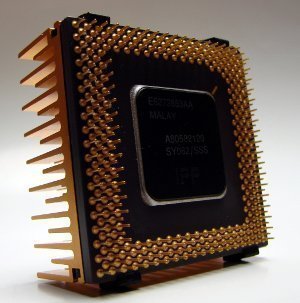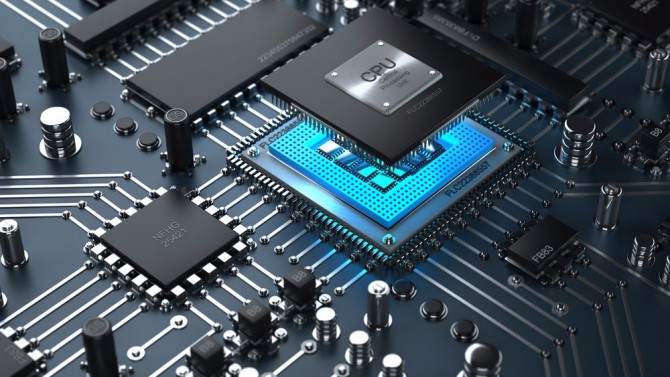Table of Contents
In the intricate dance of technology, understanding How Processors Work is akin to unraveling the mystique of a grand ballet. These silicon maestros orchestrate the seamless performance of our digital devices, translating intricate instructions into the visual symphony we experience. Let’s venture behind the scenes and explore the enigmatic world where the magic of computation unfolds.
I. The Microscopic Ballet: Transistors as Dancers
At the heart of How Processors Work lies the microscopic ballet of transistors. Picture these minuscule components as nimble dancers, each one performing a vital role in the grand choreography of computations. The dancers, representing the binary language of ones and zeros, open and close in rhythmic precision, transforming electrical signals into the intricate dance of digital operations.
In the digital ballet, transistors become nimble dancers, executing the binary choreography of ones and zeros with rhythmic precision.
II. The Brainpower: Central Processing Unit (CPU)
a. CPU as the Maestro
The Central Processing Unit (CPU) stands as the maestro in the orchestra of a computer system. Armed with multiple cores and threads, the CPU’s prowess in multitasking allows it to execute a myriad of instructions simultaneously. Each core, akin to a virtuoso instrumentalist, contributes to the harmonious symphony of digital operations.
The CPU emerges as the maestro, orchestrating the harmonious symphony of digital operations with its multitasking prowess.
b. Clock Speed: The Tempo Setter
Within the realm of CPU operation, Clock Speed takes center stage as the conductor’s baton, setting the tempo for digital operations. Measured in gigahertz (GHz), a higher clock speed dictates a faster rhythm of executing instructions. This tempo-setting mechanism influences the overall performance and responsiveness of the digital symphony.
In the digital symphony, Clock Speed becomes the conductor’s baton, dictating the tempo and pace of computational operations.
III. Multitasking Mastery: Cores and Threads
a. Cores: Virtuosos of Multitasking
Modern processors showcase their prowess in multitasking through the presence of multiple cores. These cores, analogous to virtuoso instrumentalists, allow the processor to juggle multiple tasks simultaneously. The more cores, the more efficiently the processor can perform, transforming it into a multitasking virtuoso within the digital orchestra.
In the multitasking ensemble, processor cores become the virtuoso instrumentalists, seamlessly performing multiple tasks concurrently.
b. Threads: Pathways to Efficiency
Within the intricacies of multitasking, Threads emerge as the pathways through which the processor navigates the labyrinth of instructions. Picture threads as express lanes on a digital highway, enabling the processor to traverse multiple tasks concurrently with efficiency. The synergy between cores and threads enhances the overall efficiency of multitasking operations.
Threads become the express lanes, facilitating the efficient navigation of the digital highway during multitasking operations.
IV. Quantum Leap: Quantum Processors
a. Quantum Computing: Beyond Classical Limits
As technology pushes boundaries, Quantum Processors emerge as the avant-garde, challenging classical notions of computation. Unlike classical bits, quantum bits or qubits exist in a superposition, entangled in a dance that defies the binary constraints of classical computing. This quantum leap opens new dimensions of computational power, promising revolutionary advancements in solving complex problems.
Quantum Processors become the avant-garde, ushering in a new era of computational possibilities through the entangled dance of qubits.
V. The Instruction Set: Decoding the Script
a. Machine Language as the Script
How Processors Work involves decoding the script written in the language of machine code. This low-level programming language is the set of instructions that the processor comprehends and executes. The script guides the processor’s actions, transforming the binary choreography of transistors into meaningful digital operations.
Machine language becomes the script, guiding the processor’s actions and transforming binary choreography into meaningful digital operations.
VI. Choosing the Right Conductor: Processor Selection
a. Intended Use: Tailoring the Symphony
Selecting the right processor is akin to choosing a conductor for a specific musical genre. The intended use of the device, whether it’s gaming, content creation, or everyday tasks, guides the choice. Different processors excel in various scenarios, harmonizing with the intended workload to deliver an orchestrated masterpiece.
In the symphony of silicon, choosing the right processor becomes the composer, tailoring the composition to align with the intended use.
b. Compatibility: Orchestrating with Precision
Just as instruments in an orchestra must blend seamlessly, processor compatibility with the device’s motherboard and components is crucial. This ensures optimal performance and prevents a discordant cacophony of malfunctions. Compatibility becomes the conductor’s score, ensuring each component plays in harmony within the technological orchestra.
Compatibility becomes the conductor’s score, ensuring each component plays in harmony within the technological orchestra.
Conclusion: The Ballet Continues
In the ongoing ballet of technology, understanding How Processors Work unveils the intricate dance of transistors, cores, and quantum leaps. From the microscopic ballet of transistors to the avant-garde performance of quantum processors, each element contributes to the grand choreography of computational power. The digital ballet continues, and with each technological leap, the performance becomes more mesmerizing, pushing the boundaries of what was once thought possible.




